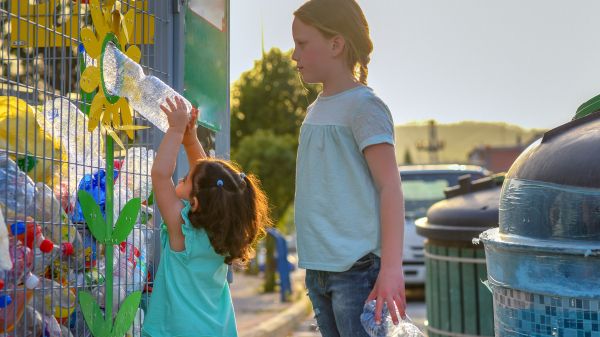From Classroom to Conservation: How to Create Environmental Education That Actually Changes the World

Environmental educators face a critical challenge: how do we move beyond simply raising awareness to creating real, lasting conservation impact? Recent research across diverse educational contexts reveals powerful strategies that transform how students connect with nature and take environmental action. Here's what the evidence tells us about building conservation education programs that truly work.
View eeRESEARCH Collection: Conservation
Start Local, Think Global
One of the strongest findings across multiple studies is the power of local focus. When urban high school students in New York discovered American eels migrating through their own Hudson River, their entire relationship with their neighborhood transformed. What had been mere scenery became a living ecosystem worthy of protection. Similarly, students in Papua who learned through traditional "Sasi Laut" marine conservation practices showed dramatically improved conservation attitudes because the content connected to their cultural heritage.
For educators: Begin with your students' immediate environment. Whether it's a school pond, urban creek, or nearby forest, local ecosystems provide tangible connections that make global environmental challenges feel manageable and relevant. Students can measure water quality changes in their local stream far more easily than trying to grasp polar ice cap melting.
Move Beyond the Classroom
The most impactful programs combine direct experience with living organisms and hands-on action. Research shows that programs achieving actual conservation outcomes, not just attitude changes, share key characteristics: they collaborate with local scientists and resource managers, incorporate action elements like habitat restoration or species monitoring, and focus on measurable environmental improvements.
The New Zealand study on invasive species education reveals another crucial insight: hands-on activities must be voluntary and respectful. Students need agency in choosing their level of participation, with alternatives like tree planting for those uncomfortable with predator control activities.
For educators: Partner with local conservation organizations, universities, or government agencies. Design projects where students contribute to real scientific research or conservation work. This authentic purpose enhances engagement while building valuable community connections.
Harness the Power of Cultural Connection
Programs that integrate traditional ecological knowledge and local cultural wisdom prove remarkably effective. Papuan students learning about conservation through indigenous practices showed significant attitude improvements because the content honored their cultural heritage while addressing modern environmental challenges. This approach transforms conservation from an abstract concept imposed by outsiders into a continuation of valued cultural traditions.
For educators: Research the traditional ecological knowledge of your region's indigenous communities. With appropriate respect and permission, incorporate these perspectives to show students that environmental stewardship has deep cultural roots. This is particularly powerful for students from indigenous backgrounds but benefits all learners by demonstrating diverse approaches to conservation.
Design for Lasting Impact
Perhaps most remarkably, research on the Sunship Earth program demonstrates that well-designed environmental education can influence people decades into adulthood. Former participants surveyed 6-31 years later showed significantly stronger pro-environmental attitudes, with 83% reporting the program continues to influence their environmental views and actions.
What made this program so effective? It combined direct outdoor experiences, systematic ecological concept coverage through hands-on activities, structured emotional connection building, and explicit commitment-making for environmental action. The 5-day immersive residential format appears crucial—creating intensity and memorable experiences that participants could draw upon throughout their lives.
For educators: While not everyone can offer residential programs, the principles apply to any setting. Create memorable experiences that engage emotions alongside intellect. Use storytelling, acronyms, and special places to help concepts stick. Most importantly, help students make explicit commitments to environmental action rather than leaving behavior change to chance.
Embrace New Technologies
Traditional face-to-face education will always have irreplaceable value, but research on conservation podcasting reveals exciting possibilities for extending reach. The "Deer University" podcast achieved over 265,000 downloads across all US states and 25 countries, proving that well-designed audio content can effectively bridge scientific research and public understanding.
For educators: Consider podcasting as a complement to existing programs. Students can create episodes about local conservation issues, interview community experts, or share their field experiences with global audiences. The medium is relatively inexpensive and can amplify your program's impact far beyond your immediate community.
Focus on Direct Conservation Outcomes
A comprehensive review of 105 environmental education studies reveals a critical gap: while 98% of programs report positive results, only 53% achieve direct conservation outcomes like ecological improvements or documented behavior changes. Too many programs stop at attitude change without measuring actual environmental impact.
For educators: Design programs with explicit conservation goals from the start. Partner with scientists who can help measure ecological indicators. Document quantitative outcomes like trees planted, invasive species removed, or habitat restored. This data not only demonstrates impact but also provides compelling evidence for program funding and expansion.
The Path Forward
Effective conservation education requires more than good intentions. It demands evidence-based strategies that connect hearts, minds, and hands. By starting local, embracing hands-on action, honoring cultural knowledge, creating memorable experiences, leveraging technology, and measuring real outcomes, environmental educators can create programs that don't just inform students about environmental issues but inspire lifelong conservation action.
The research is clear: when done well, environmental education has the power to create transformative learning experiences that shape how people see their role in the natural world for decades to come. Our students, and our planet, deserve nothing less.